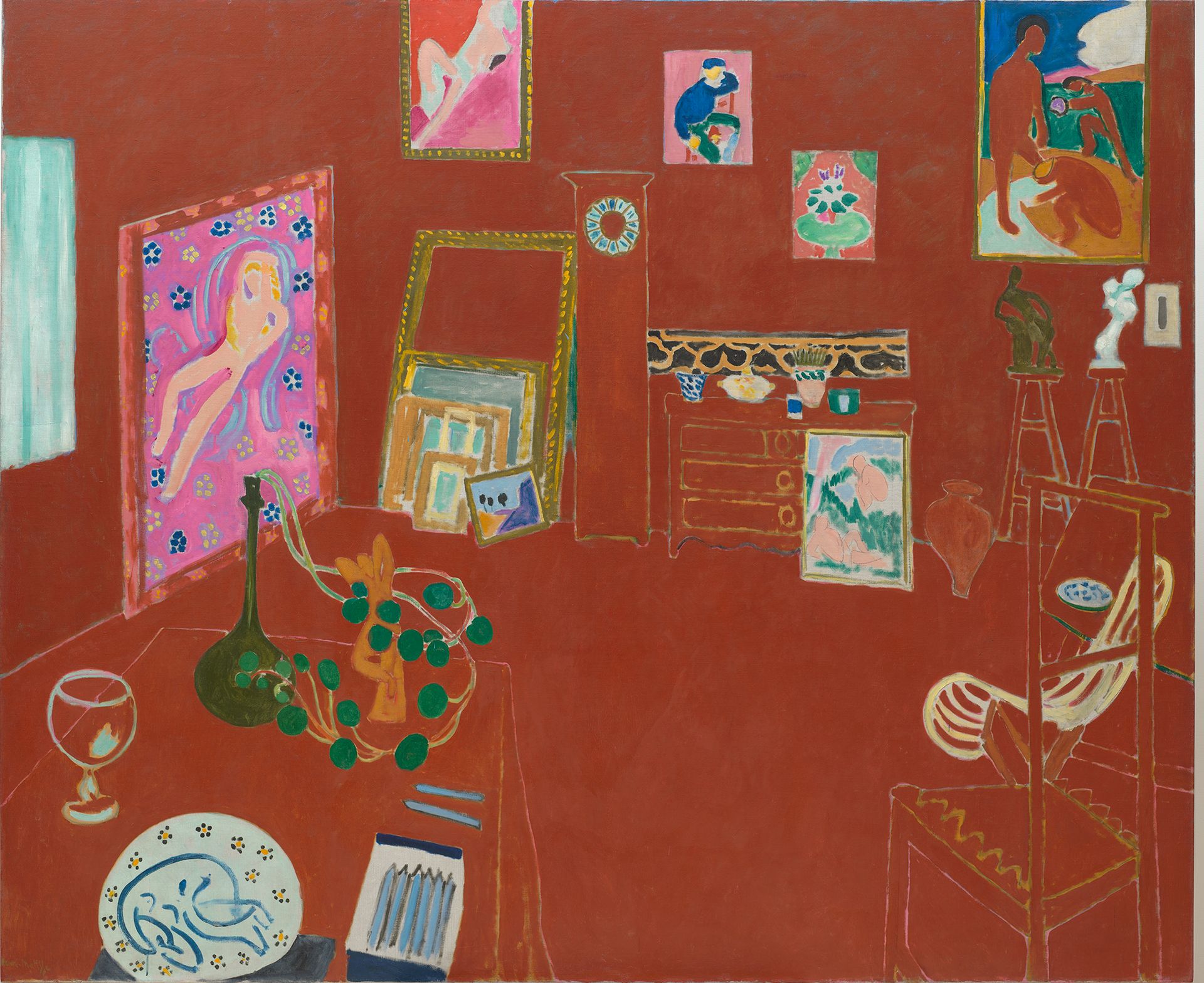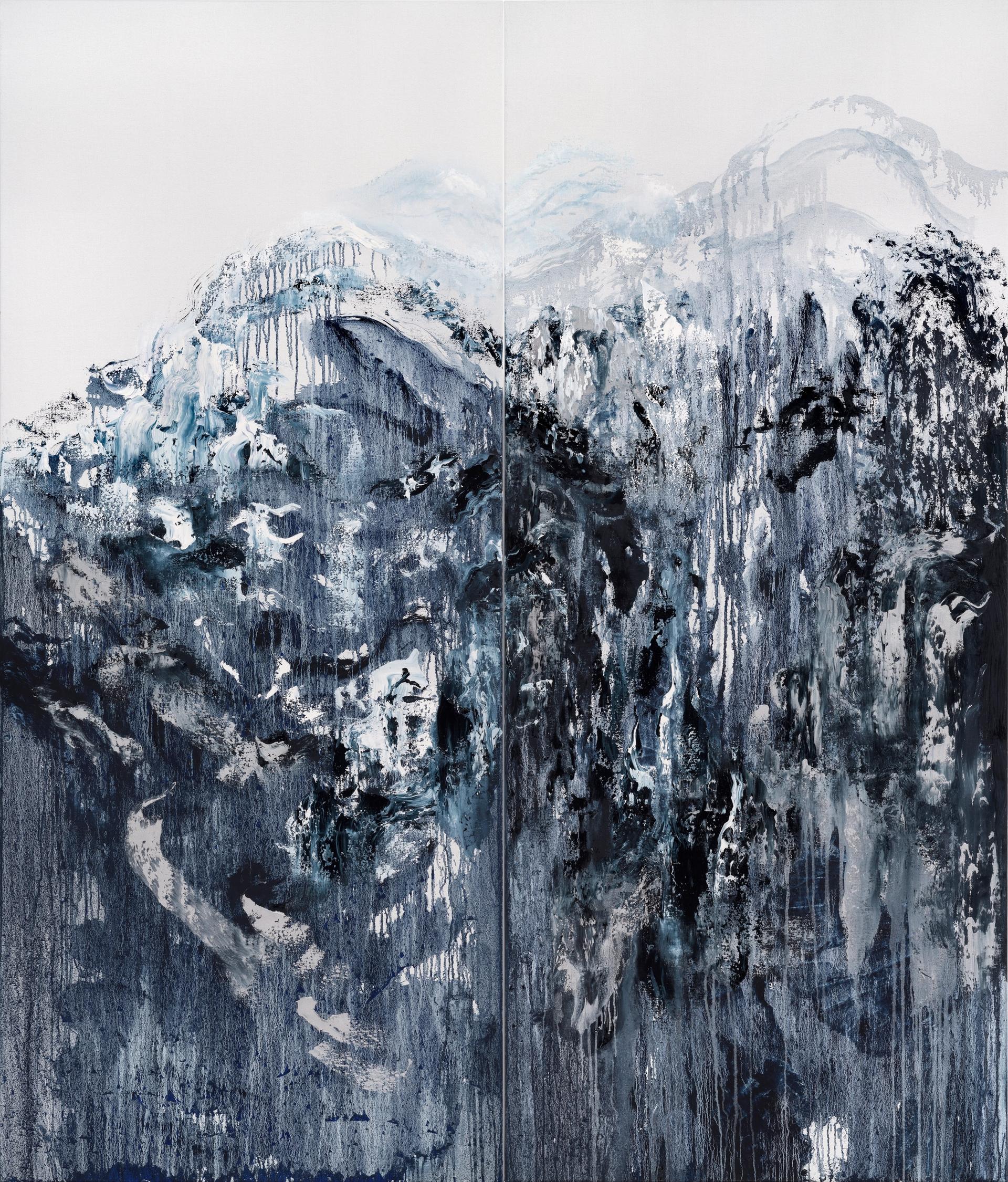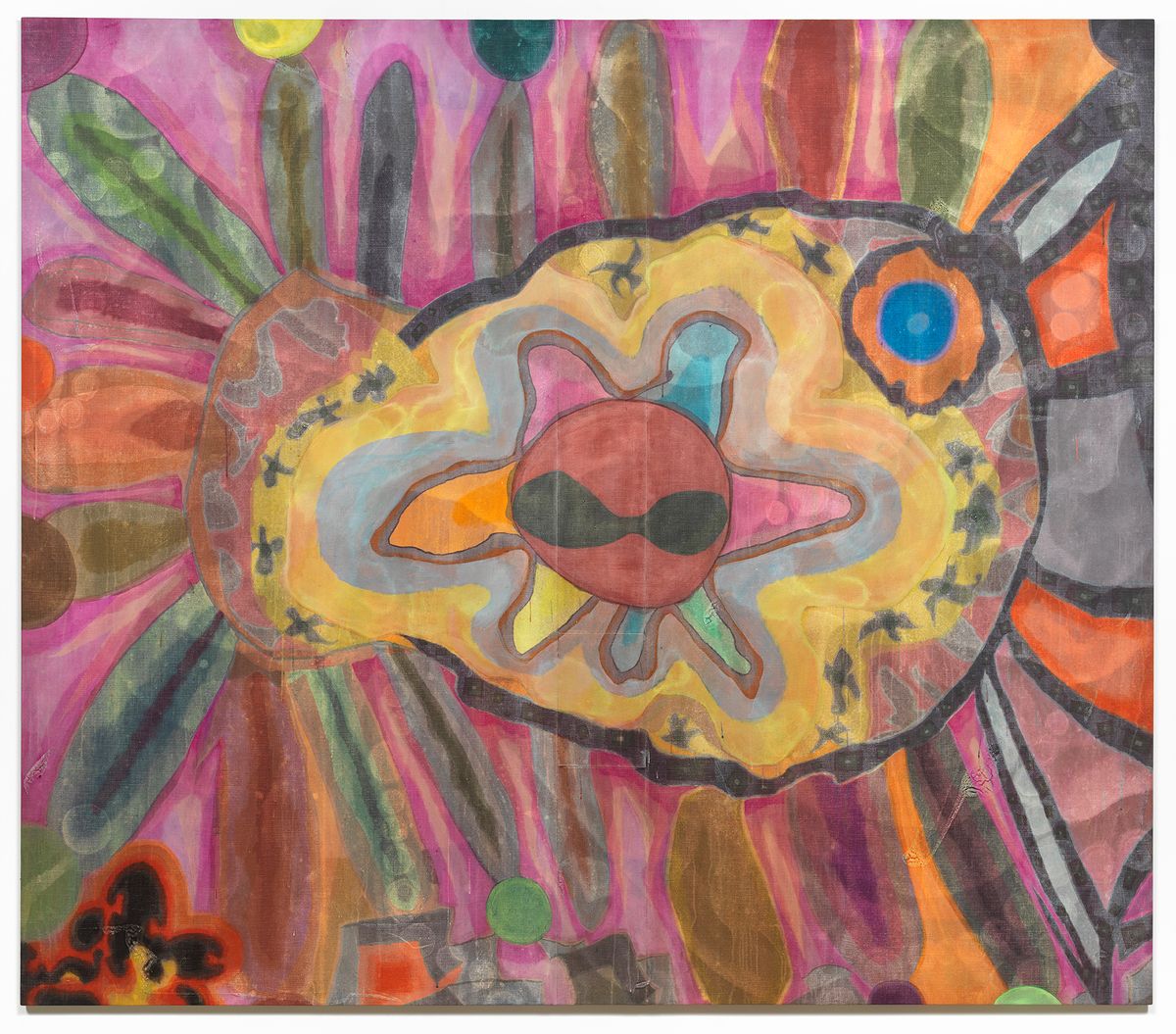Lukas Quietzsch: Parallel Warnings in Simple Arrangements
Until 14 May at Ramiken, 389 Grand Street, Manhattan
The Berlin-based multidisciplinary artist Lukas Quietzsch presents seven recent paintings in his first solo exhibition in New York, each produced through a meticulous but seemingly spontaneous process. The artist has applied a base layer incorporating calcite and other materials to amalgamated panels of linen, creating large-scale compositions that have a textured, sometimes sparkling and porous surface. He has surmounted the base with layers of gouache that have dried and then been washed off, leaving the pigments embedded onto the surface of the works. The paintings have a diaphanous, transcendental quality that overshadows the subject matter, which range from psychedelic cut-outs, paisleys and a sun wearing sunglasses to works riffing on architecture and geometric abstraction. The pieces are at once unpretentious, calculated and deeply psychical. Quietzsch’s recent exhibitions include Groß und Klein (Big and Small) at the Kunstverein Freiburg earlier this year and My Thoughts are a Combination of Sex and the (Deep) Desire to Kill Myself at the Schiefe Zähne in 2020.

Henri Matisse. The Red Studio (1911). © 2022 Succession H. Matisse / Artists Rights Society (ARS), New York.
Matisse: The Red Studio
Until 10 September at the Museum of Modern Art, 11 West 53rd Street, Manhattan
Henri Matisse’s The Red Studio (1911) is one several paintings in which the French artist immortalised his workspace, reproducing in miniature his paintings, sculptures, furniture and decorations within simplified architectural elements. But it is unique for the Venetian red paint that dominates the space, which MoMA conservators have recently discovered was an afterthought, painted over a prior and more conventional colour scheme. Commissioned and subsequently rejected by Matisse’s main patron, Sergei Shchukin, the once-underrated work traded hands several times before it was eventually acquired by MoMA in 1949, where it was celebrated for its visionary approach to colour and space. Beyond an ode to this work and the tradition of studio paintings, the exhibition underscores how technological advances in the conservation field have led to new ways of thinking about artists’ processes and have recontextualised paintings that history had sometimes forgotten.

Maggie Hambling, Edge XXI (2021). Courtesy Marlborough Gallery.
Maggi Hambling: Real Time
Until 30 April at Marlborough Gallery, 545 West 25th Street, Manhattan
It’s the last week to see the first solo New York exhibition devoted to the British artist Maggi Hambling. Readers may remember Hambling as the artist behind the controversial statue of the English feminist Mary Wollstonecraft, which was likened to the “botched Ecce Homo” and criticised for depicting Wollstonecraft nude when it was unveiled in 2020. But Hambling’s practice has been primarily centred on painting over the last five decades; she was once described as the “female Francis Bacon”, owing to the visceral portraits she made early in her career that earned her widespread acclaim. The show focuses on this stronger facet of Hambling’s practice, comprising paintings made in the last decade from her Edge series, in which the artist masterfully blends figuration and abstraction to evoke mountainous landscapes, snarling or dying animals, melting glaciers, cascading waterfalls, waves crashing and other frenetic subjects. The panoramic pieces aim to both reference the climate crisis and celebrate the natural world, having the quality of ancient ink paintings tinged with the surrealist streak that is a signature of Hambling’s work.


